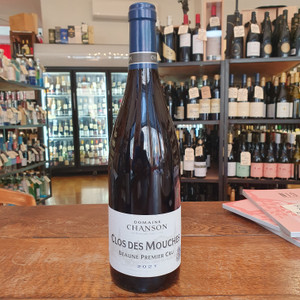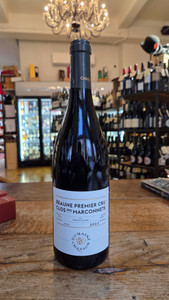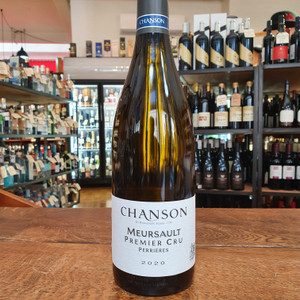
The deep nose of amarena cherry pulls you into this very ripe and concentrated Beaune 1er Cru, with a wonderfully creamy texture that ripples sensually over your palate, before the wine glides off into the velvety distance. Beneath the delicious surface this has a massive structure that will give it a very long life. Drink or hold.
-95 Points James Suckling
--------THE PRODUCER--------
Chanson
Though modest in size, Chanson Père & Fils is one of the oldest of Beaune’s great négociant houses, having been founded in 1750 by Simon Verry. The Chanson family, already vineyard owners in Beaune, Savigny and Pernand, took control during the 19th century. In 1999 the company was sold to Bollinger, who appointed Gilles de Courcel to run the business in 2002. The company has kept its old headquarters and maturation cellars in the ‘bastion’, a late medieval stone tower which was one of Beaune’s principal fortifications, with a more modern vinification facility on the edge of town towards Savigny, built in 1974 and undergoing modernisation and extension between 2008 and 2010.
The wines are made by Jean-Pierre Confuron, of Domaine Confuron-Cotetidot in Vosne-Romanée, whose brother Yves supervises Gilles de Courcel’s family domaine in Pommard. The new team has made considerable improvements, beginning in the vineyards which are now ploughed and no longer fertilised. From 2009 the domaine vineyards will be organic. Unusually amongst the major négociants, Chanson reds are made with a good proportion of the stems included. The majority of the wines see about 30 per cent new oak during maturation, with François Frères favoured for red-wine barrels and Damy for white.
The Chanson domaine, increased to 45 hectares by some shrewd purchases in 2006, provides about a quarter of the company’s production which extends to Chablis, the Mâconnais and the Beaujolais. Its own vineyards are entirely in the Côte de Beaune.
The wines are made by Jean-Pierre Confuron, of Domaine Confuron-Cotetidot in Vosne-Romanée, whose brother Yves supervises Gilles de Courcel’s family domaine in Pommard. The new team has made considerable improvements, beginning in the vineyards which are now ploughed and no longer fertilised. From 2009 the domaine vineyards will be organic. Unusually amongst the major négociants, Chanson reds are made with a good proportion of the stems included. The majority of the wines see about 30 per cent new oak during maturation, with François Frères favoured for red-wine barrels and Damy for white.
The Chanson domaine, increased to 45 hectares by some shrewd purchases in 2006, provides about a quarter of the company’s production which extends to Chablis, the Mâconnais and the Beaujolais. Its own vineyards are entirely in the Côte de Beaune.
--------THE GRAPE--------
Chardonnay
Chardonnay is without a doubt the most known and most widely planted white grape variety around the world. It is historically home in Burgundy where it produces a more refined, mineral and poised wines all up and down the Cote de Beaune and in Chablis. Throughout the new world it gained fame in both California and Australia where it is known to produce big, rich, buttery and tropical fruit-laden white wines.
--------THE REGION--------
Burgundy
Burgundy is one of the most important wine regions in the world. It is often the one region that winemakers not lucky enough to be based there strive to make wine in. Run over to your local winery and I am sure that you'll find at least one Burgundy-phile. It is the historical home of the two major grapes: Pinot Noir and Chardonnay.









